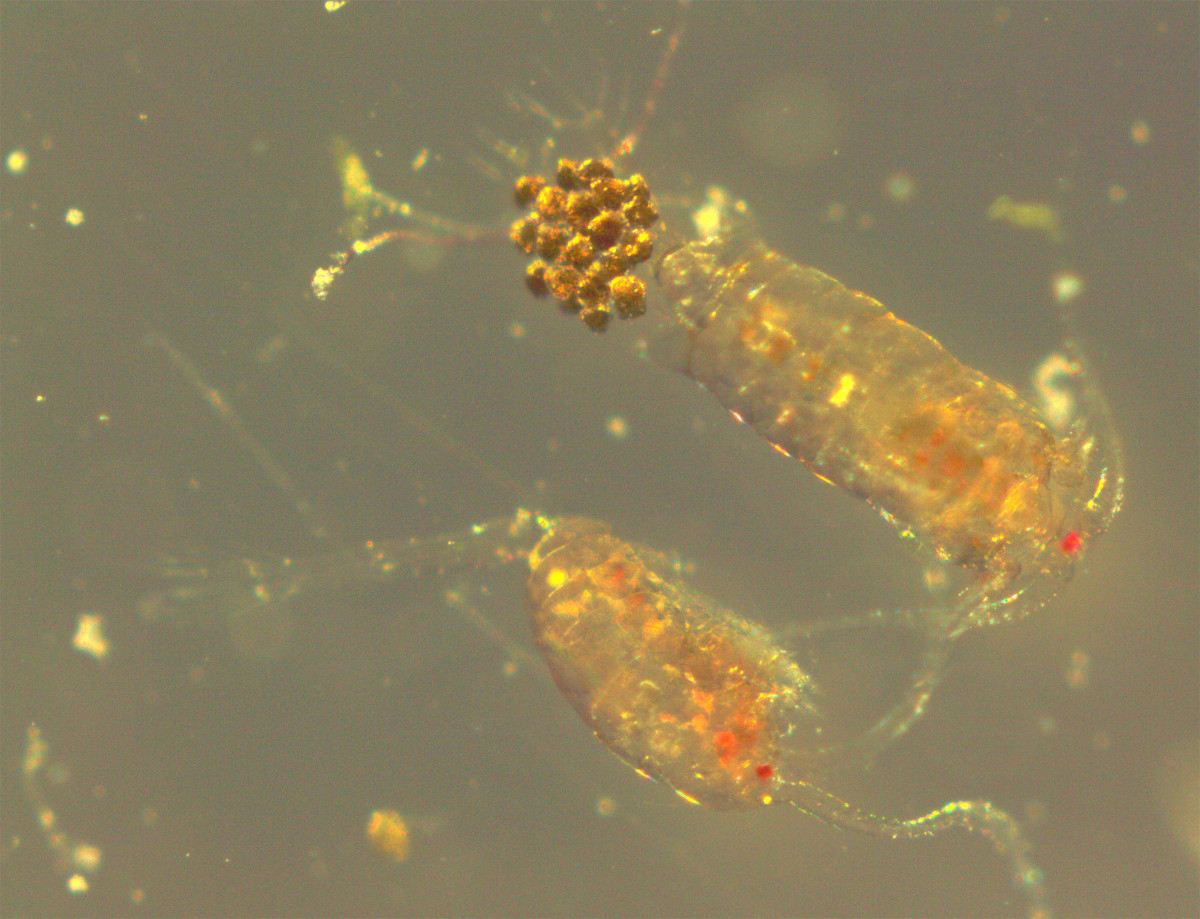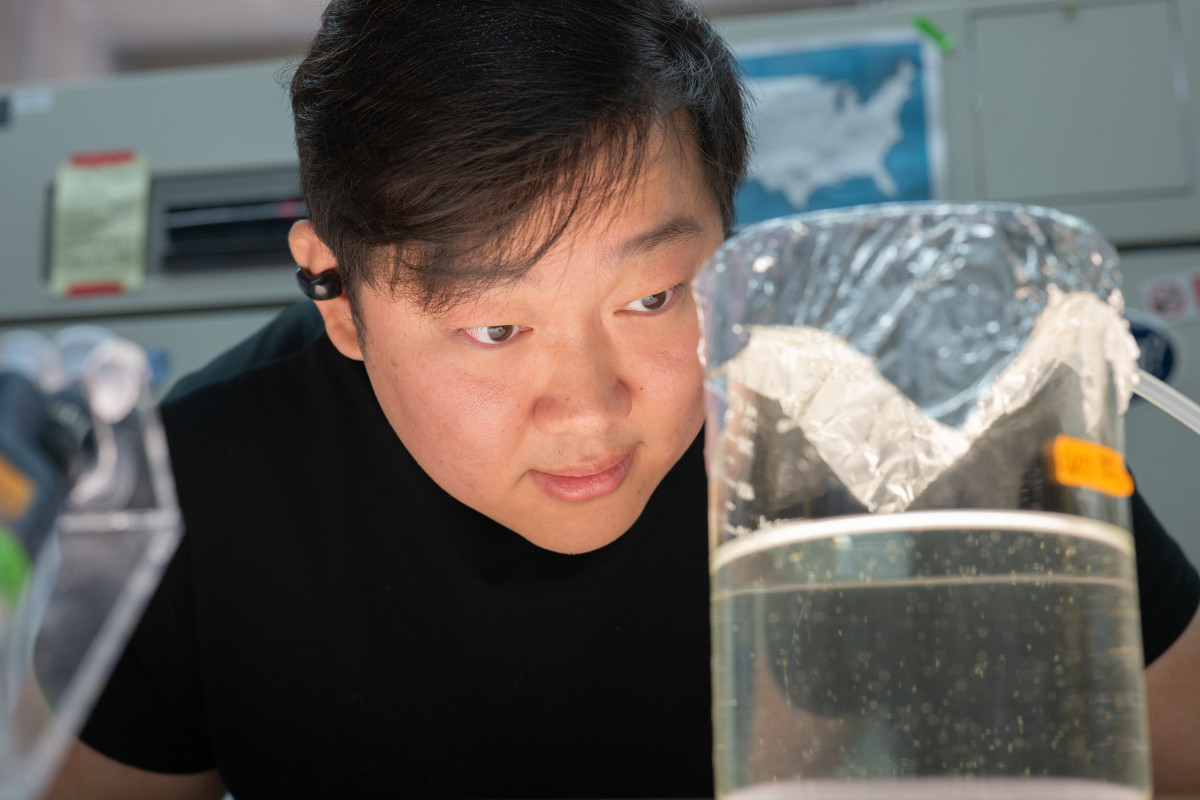UW researchers turn to the tiny copepod for a big discovery, showing that gene location influences natural selection

A new study by researchers at the University of Wisconsin–Madison provides the first empirical evidence connecting the chromosomal location of genes to natural selection, indicating the arrangement of genes can influence how quickly populations can adapt to rapid environmental change.
Published Friday in the journal Nature Communications, the study analyzed the genomes of three sibling copepod species (Eurytemora affinis species complex) to map how certain mutations — called chromosomal fusions — moved the location of genes as the tiny aquatic crustaceans evolved. The research team was surprised to find that even though these fusions occurred millions of years ago, they have implications for a contemporary species’ ability to adapt.
Until the last 80 years, these copepods largely lived in coastal estuarine ecosystems. Recently, these crustaceans have invaded freshwater ecosystems like the Great Lakes through the transport and dumping of ship ballast water. Carol Eunmi Lee, a professor of integrative biology at UW–Madison, has been studying copepod genetics for over 20 years to understand how they can adapt and thrive in new environments.

The short lifespan and relatively small genome of copepods make them the perfect model organism to investigate these questions. Even still, it took postdoctoral researcher Zhenyong Du nearly three years to sequence the genomes and map how the chromosomal fusions relocated genes to uncover patterns of natural selection. The work also revealed that each sibling species has an entirely different number of chromosomes.
“We were absolutely shocked,” says Lee.
These three sibling species, or clades, of copepods share a common ancestor and can breed with one another, something that is rare for organisms with different chromosome numbers, explains Du, who co-authored the paper with Lee. The clade from Europe has 15 chromosomes, while the Gulf clade has seven. Meanwhile, the Atlantic clade, which now also lives in the Great Lakes, has just four chromosomes.
Du and Lee immediately set out to understand why these sibling species have packaged their genes so differently from one another.
“We looked at the evolutionary history of the chromosomes, and we found that fusions are bringing multiple chromosomes together,” says Du.
Chromosomal fusions — the joining of different chromosomes into one — are a type of mutation that can happen all the time. This process can bring genes from different chromosomes together on the same chromosome, physically linking them as a potential unit of inheritance during natural selection.
Du and Lee started to wonder if the fusions that resulted in different chromosome numbers were beneficial for survival and thus were favored by natural selection in the past.
“During the evolutionary history of these copepods, salinity is the major variable of their living conditions,” Du explains.

One of the main mechanisms that copepods use to adapt to changes in salinity are proteins called ion transporters. Du and Lee found that these ancient chromosomal fusions caused genes that code for key ion transporters to be grouped together.
They observed that these fusions also caused the groupings of genes to move away from the recombination-prone arms of the chromosome and closer to its center, where recombination would not rip apart combinations of beneficial gene variants.
Genes are often subject to recombination, a process that occurs in the exchange of DNA during procreation and allows for new combinations of genetic material in offspring. Recombination is beneficial in creating genetic diversity that can help a species survive. And sometimes the fusions are so beneficial that they become permanent in the evolutionary process.
Scientists have hypothesized for years that genomic architecture evolution, particularly chromosomal fusions, might play an important role in evolutionary adaptation. This is the first study to produce empirical evidence of that particular link. The UW researchers’ study shows as copepods evolved, natural selection seemed to favor fusions that moved these ion-transporter genes toward the center of the chromosomes.
Importantly, the findings also suggest that fusion sites that were created millions of years ago are still hot spots for natural selection in invasive populations in the Great Lakes today.
While this study focuses on copepods, Du and Lee expect there will be implications for how scientists consider genetic architecture evolution and mechanisms of adaptation in other invasive species. There are also important implications for predicting which populations will be able to survive and adapt to future climate change.
“Genome architecture likely has profound impacts on how populations respond to natural selection. It’ll affect the mechanism of natural selection in a population, and determine how quickly it can evolve and respond,” says Lee.
This project was funded by National Science Foundation grants IOS-2412790, OCE-1658517, and DEB-2055356, and French National Research Agency ANR-19-MPGA-0004.
Research at the University of Wisconsin–Madison drives innovation, saves lives, creates jobs, supports small businesses, and fuels the industries that keep America competitive and secure. It makes the U.S.—and Wisconsin—stronger. Federal funding for research is a high-return investment that’s worth fighting for.
Learn more about the impact of UW–Madison’s federally funded research and how you can help.





